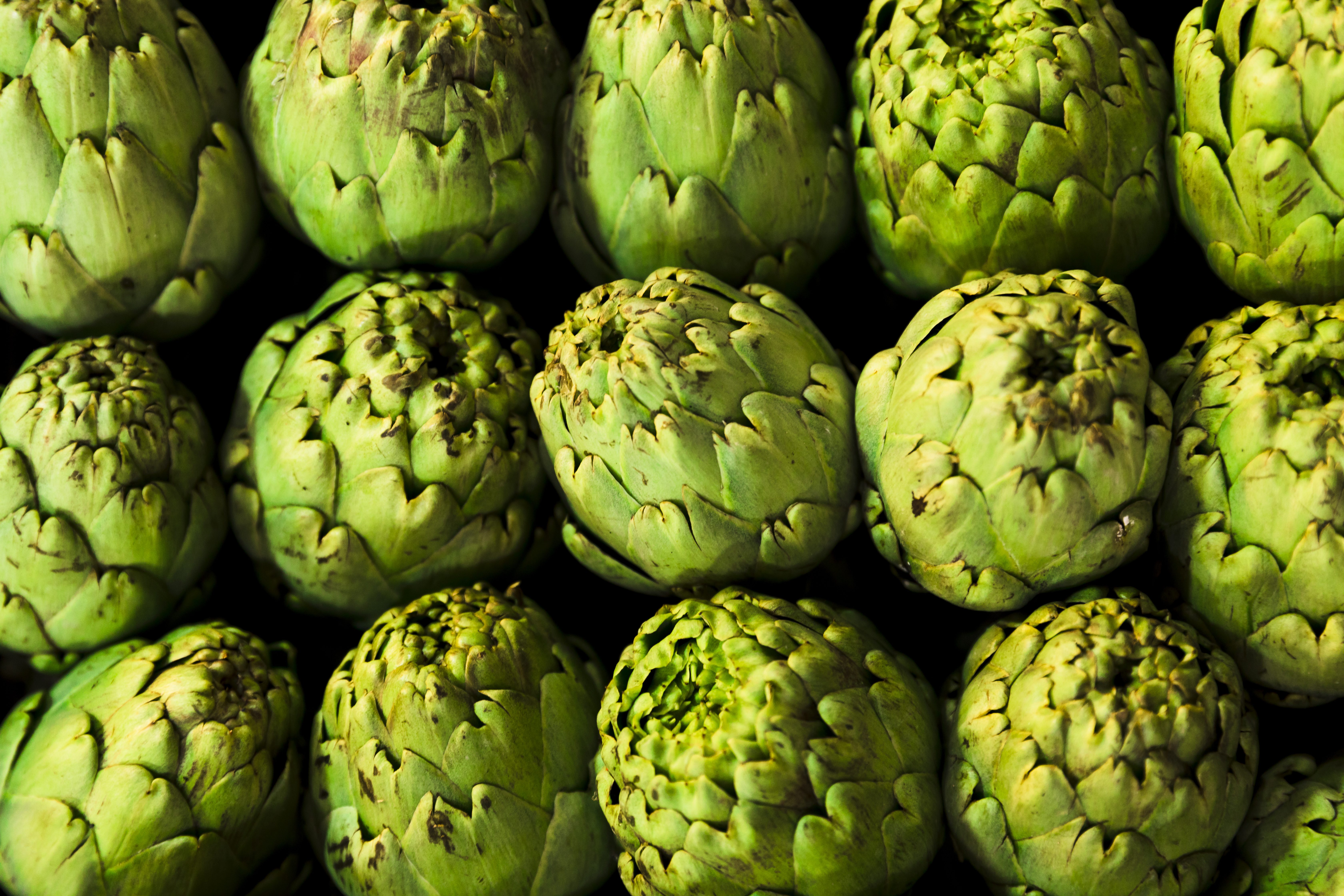Useful Information for Artichokes: Nutrition & Storage

This post is also available in:
This post is also available in:
![]() Ελληνικά (Greek)
Ελληνικά (Greek)
General information about artichokes:
Artichoke is a perennial plant native to the Mediterranean region. Its good flavor and health benefits have also led to increased crop cultivation as an annual or biennial plant. The scientific name of the artichoke is Cynara cardunculus var scolymus, a member of the famous Asteraceae family. The plant can develop a deep root system (90-120 cm or 3-4 ft) and an elongated stem growing up to 2 m tall (6.6 ft). It has green-silver long (50-80 cm / 20-30 in) lobed leaves growing from short stems. The edible part is mainly the immature flower buds (the fleshy lower part of the bracts), usually called capitula, heart, or head. Some widely used varieties are the Green Globe, Imperial Star, Desert Globe, Emerald, Big Heart, Violet d’Hyères, and Green Globe improved.
Nutritional Value of Artichoke
Moreover, artichoke is a rich source of minerals and polyphenols, while some varieties also have a high level of anthocyanins. Except for the fleshy head, the artichoke roots have inulin, an oligosaccharide that can increase calcium absorption, positively affect bowel movement and lipid metabolism, and have anti-cancer properties. Also, artichoke has a high content of vitamins A, B1, B2, B3 and C.
In cooking, we mainly use the spherical fleshy lower part of the bracts after removing the bracts and fuzz from the flower. In Crete, it is also consumed raw with lemon. It is also used as animal feed, enabling producers to earn additional income.
Artichokes Climate Requirements
Artichokes are perennial plants native to Mediterranean countries, and this means they thrive in temperate climates, mild cool, and coastal areas with low frost risk. The optimum temperatures for artichoke cultivation are 20-24°C (68-75°F) during the day and 12-14 °C (54-57 °F) during the night. The plants can tolerate temperatures of -3 to -5℃ (26.6-23 °F), but any temperature below 1℃ (33.8°F) is harmful to the artichokes. When the temperature is between 0 °C (32 °F) and -3 °C( 26.6 °F), bract cells start to die, and once we have temperature further decreased up to -5 °C (23 °F), necrosis of leaves and stems is a common phenomenon. In areas with frost dangers, a common technique is to cut back the plant’s foliage in the fall during dormancy and mulch heavily around them, burying the plant under soil and straws up to 30-46 cm (1-1.5 ft). Mulching can increase the tolerance of the plants to low temperatures, but no plant can escape severe damage in temperatures below -9 °C (15 °F).
About 2200 hectares are cultivated in Greece, and 26,500 tonnes are produced. Keep in mind that 1 hectare = 2,47 acres = 10.000 square meters. Artichoke thrives in areas with mild winters, such as the Peloponnese, Crete, Messinia, and the Aegean islands. Most Greek production is produced in Nafplio, specifically in Iria and Candia. In Argolida and Tinos, the artichoke festival is held every May. Furthermore, it is cultivated in France, Great Britain, and all Southern European countries.
Storage and Post-Harvest Handling of Artichokes
Usually, the artichokes are sold soon after harvest, but for temporary storage, the farmer can apply a precooling treatment (4-5 °C or 40 °F) and store them at 0 °C (32-33 °F) and 90-100% relative humidity for 2-4 weeks.
After harvest, we must be cautious while transporting and handling artichokes. Any injuries may cause bracts to wilt, open, and turn yellow or brown. In general, artichokes must be packaged to protect them adequately. The most common packaging for artichokes is in waxed cartons or cartons lined with perforated plastic film. Packed artichokes are sorted by size. The most popular caliber categories in the market are the largest ones (when 18-24 or 36 buds in a box), with the harvested buds to have a diameter between 4 and 4.5 in (10-11.5 cm).
For the best preservation of the artichokes, it is recommended that they are stored under modified atmosphere conditions. The optimum composition of a modified atmosphere is 2-3% oxygen (O2) and 3-5% in carbon dioxide (CO2). Under these conditions, a delay in the discoloration of the bracts and the decomposition of the bulb for a few days was observed. Concentrations below 2% in O2 can lead to internal browning. However, we must install suitable carbon dioxide-producing equipment based on the requirements of our storage space. We can also install ozone generators to control fungi. The ozone additionally protects the cut stems from browning. Finally, artichokes do not produce ethylene and are not sensitive to its presence.
Whether packaged or not, the product must undergo precooling treatment in precooling chambers. These chambers are designed to quickly reduce the temperature of the product we wish to preserve. During precooling, efficient air circulation in refrigeration ensures uniform temperature distribution reaching the product’s core.
Controlled Atmosphere Cooling is an essential technique for fresh products with particular sensitivities to prolong their preservations, e.g., pears, kiwis, apples, plums, nectarines, peaches, apricots, etc. It is based on continuously monitoring multiple parameters (temperature, humidity, ethylene concentration) within the refrigeration chambers. Applying Controlled Atmosphere Cooling to store artichokes significantly increases the product’s shelf life.
In addition, to avoid ice formation, if the temperature drops to -1 to -2°C, it helps to create 5-10 cm gaps between the pallets and place them parallel to the movement of cold air.
Artichoke as a Biofuel
Artichoke is an energy crop, meaning that we can use it to produce renewable bioenergy and even export biofuel to countries that need it. This biofuel is suitable for industrial purposes or simply for domestic use. It is a solid fuel that, in the future, could replace heating oil.
References
You may also find interesting
How to Grow Artichokes for Profit – Professional Artichoke Farming










































































